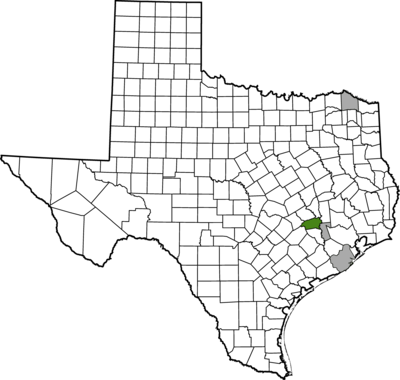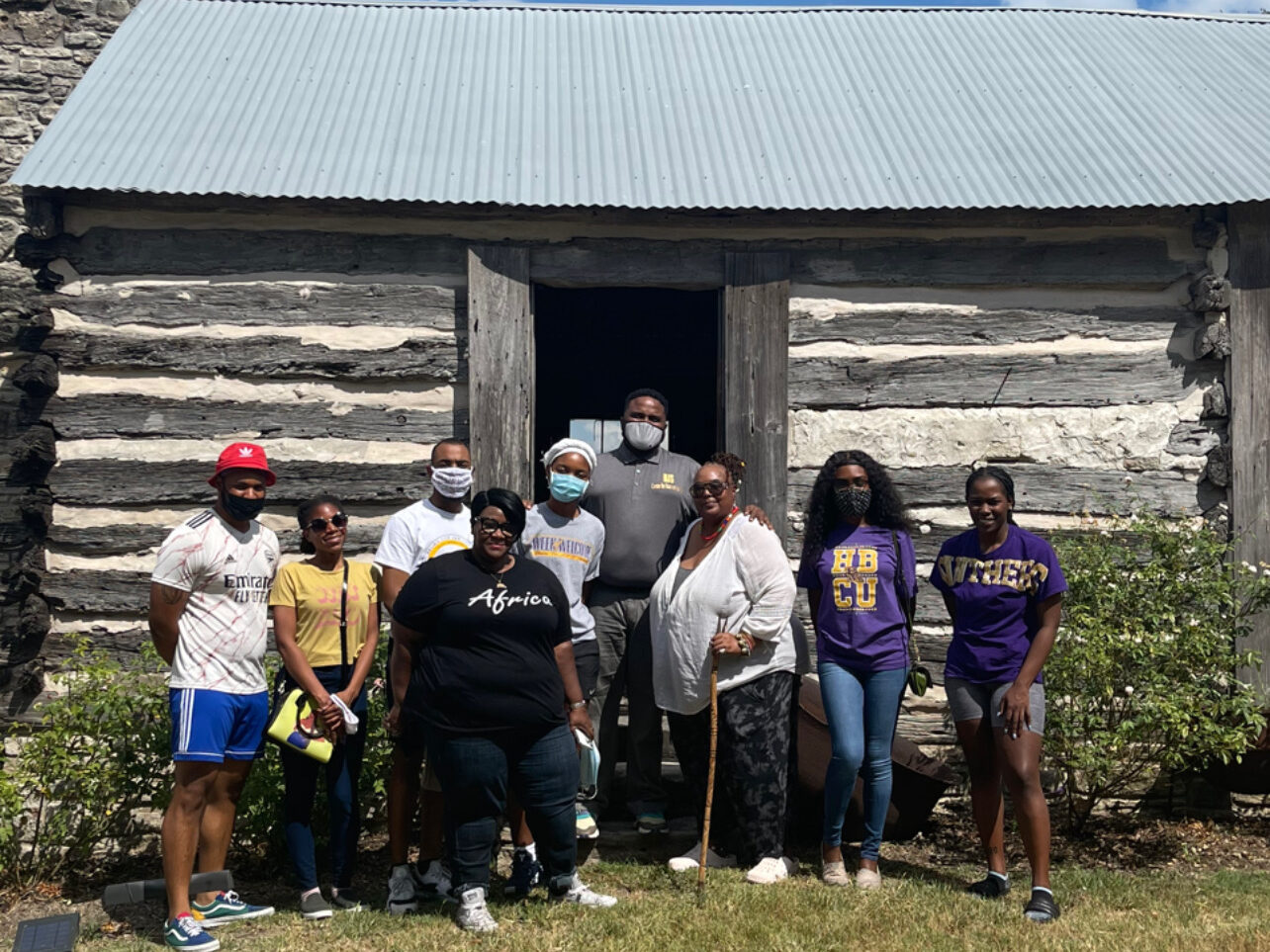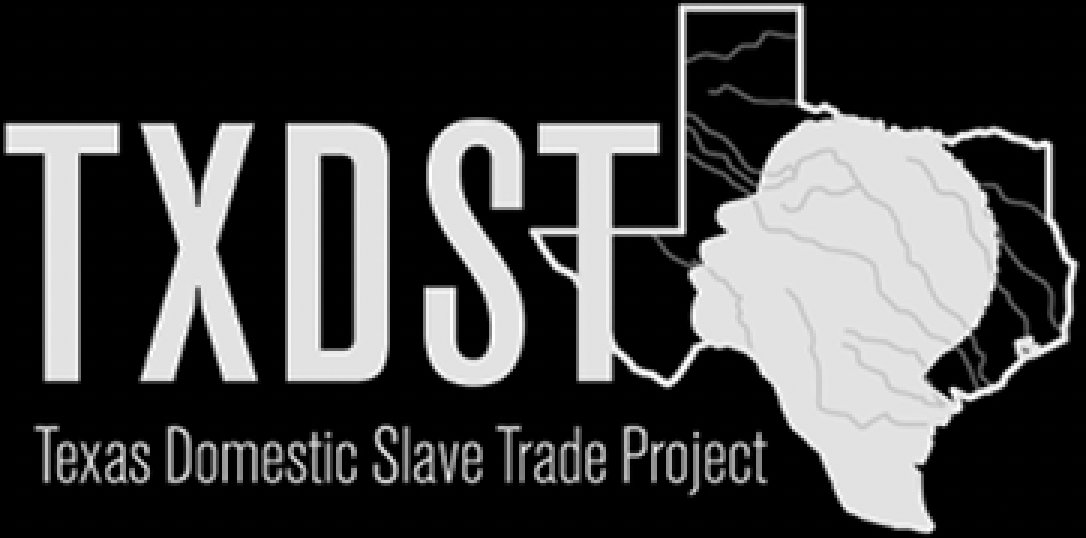
Washington County
Exploring Slavery and its Afterlives
Methodological and Pedagogical Approaches Spotlight: Experiential Learning and Public History
Experiential learning is a dynamic pedagogical approach for exploring complicated topics such as slavery. This approach involves having a concrete experience related to the topic, and developing reflective observation skills about the experience. More specifically, students develop abstract conceptualization abilities while engaging in opportunities to do active experimentation. Merging experiential learning with public history methodologies—including archiving data, collecting oral histories, and creating digital projects—provides practical learning and researching modes.

While researching Washington County and the history of the Seward Planation, my students and I conducted research on the grounds of the former plantation. The Seward Plantation is one of a few remaining Texas plantations that have multiple slave cabins on the property. Through submersing my students in the material culture and physical environment, they gained a greater understanding of the spaces enslaved people occupied on the Seward Plantation. We made several trips to the plantation which gave students the opportunity to visualize what enslaved peoples’ lives were like in the actual places they lived and worked.
My students actively engaged in historical recovery work through analyzing the antebellum structures and uncovering the experiences of the enslaved people who lived in them. Reflecting on our experiences, we offer the following points for teachers and students:
- Explore your local history.—Prior to the project we did not even know the Seward Plantation existed.
- Get involved and form partnerships within your local community.—This ongoing project was made possible through the willingness and benevolence of the George Family, the current owners of the Seward Plantation, who opened the site to us.
- Be open to learning across disciplines.
- Embrace our shared history.
Footnotes
1 Thomas Howard Morris. “Experiential learning – a systematic review and revision of Kolb’s model,” Interactive Learning Environments, vol. 28, no. 8, (January 2019): 1064-1077, https://doi.org/10.1080/10494820.2019.1570279
